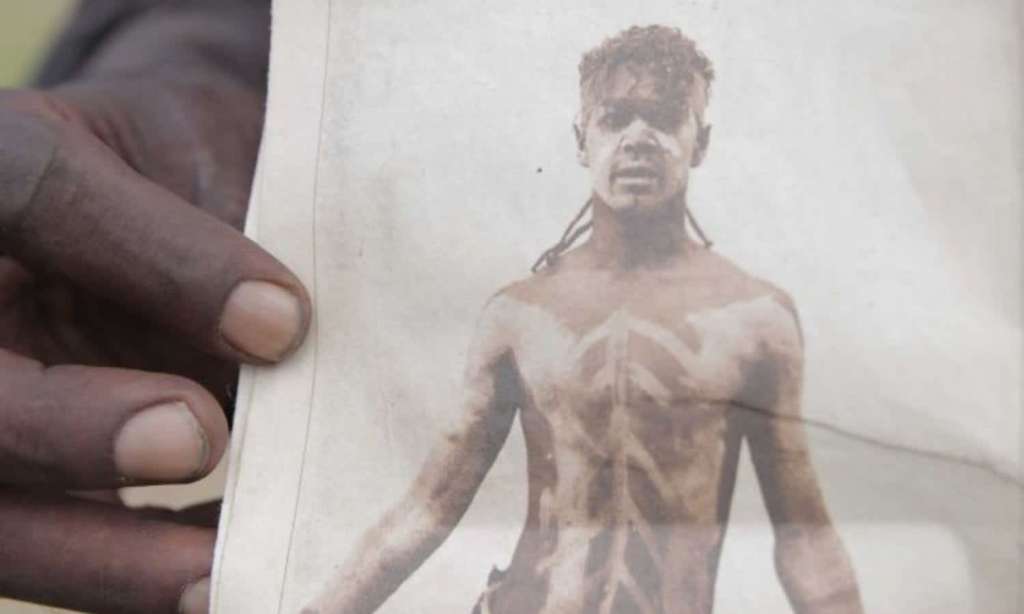Aboriginal and Torres Strait Islander readers are advised that the following article contains names and images of people who have died.
In 1993, 18-year-old Daniel Yock was arrested by two police officers for public drinking. He was arrested in the inner Brisbane suburb of West End, hand-cuffed and then placed in the back of a paddy wagon.
According to the ABC, the founder of the Wakka Wakka Dance Company troupe was placed face down in the van, before losing consciousness.
Yock’s best mate, Joseph Blair, was also arrested at the same time. Only he lived to tell the story.
The death of Yock, affectionately known as Boonie, is one of the most controversial deaths to take place while in police custody in Australia and although it happened 27 years ago, the questions surrounding his death remain unanswered.
In the new podcast, Thin Black Line, produced by the ABC and hosted by Walkley Award-winning investigative journalist Allan Clarke, Yock’s death is examined in a “deep dive” about what happened that day.
The only eyewitness, Blair, speaks publicly for the first time in almost three decades and “his still-grieving family believe that not only could Daniel’s death have been prevented, but that he shouldn’t have been arrested in the first place.”
What happened to Daniel Yock
On November 7, 1993, Yock and some friends had been drinking at Musgrave Park in South Brisbane and came under the surveillance of a police vehicle.
As the friends enjoyed the sunshine, two more vehicles arrived, and according to the ABC, they felt they were being “circled”. The police would later say that the boys were “FOP” (full of piss), however, it was the police who began calling the teens names, even calling for other cars to join them because “because you like that sort of stuff.”
One thing led to another, and the group fled, trying to outrun the officers. This is where York would collide with a Seargent and fall to the ground.
According to reports, Yock’s condition was debatable. His friends thought he had been “motionless” and “winded”, while the police reported he was conscious and walking.
Whatever the case, by the time the police van arrived with Yock and Blair at the watch-house, he was “limp, like a rag doll”.
To this day, Blair insists he tried to tell the officers that Yock was not well. Later, the same officers would deny that they heard his calls.
Once at the watch-house, the officers tried to resuscitate the dancer before an ambulance came and took him to the Royal Brisbane Hospital.
At 7.13 pm, Yock was pronounced dead. It had been only 75 minutes since his arrest.
What happened afterwards?
The following day, protestors gathered outside Roma Street Transit Centre and a violent brawl between the two parties took place.
Shockwaves and fury raged across the community, however, elders asked for calm. A week later, there was a silent protest, tracing Yock’s final moments.
The Criminal Justice Commission (CJC) found his arrest lawful, saying that the response was “appropriate”. According to the CJC, he had died of natural causes and suffered a sudden loss of consciousness “complicated by a pre-existing heart condition”.
Shane Duffy, who is now head of the Aboriginal and Torres Strait Islander Legal Service said that Yock “always had a gentle way about him”.
“[He was] a lovely young Murri kid who loved his culture, loved his dancing and was very close to family and community.”
According to the ABC, “more than 440 Indigenous people have died in the care of the state since the Royal Commission into Aboriginal Deaths in Custody reported its findings in 1991.”
The Thin Black Line launched on Sunday, November 8 with episodes dropping weekly.
Read more stories from TheLatch— and follow us on Facebook.

